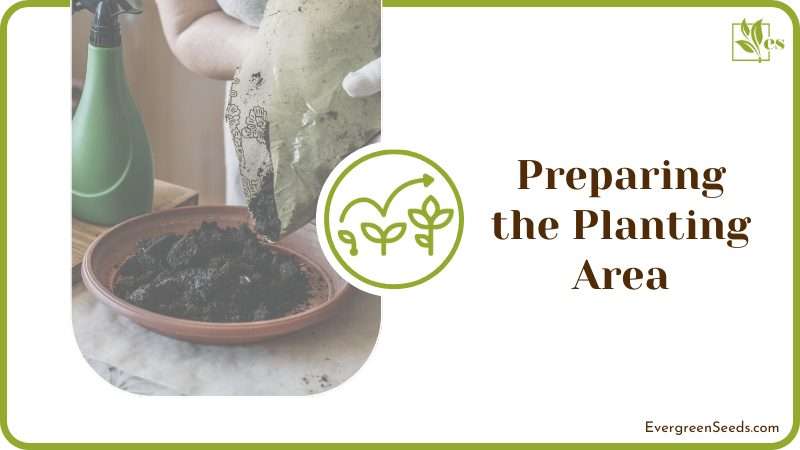Ferns are easy-growing plants that thrive in damp and shaded conditions and make for gorgeous borders along the gardens. Transplanting ferns from one place to another is an easy task and can be performed by both beginners and experts.

A general notion to be kept in mind is that you have to dig up an entire clump by the roots with as much soil as possible and then move to its new location. Let’s take a close look at all about transplanting this gorgeous non-flowering plant.
JUMP TO TOPIC
How To Transplant Ferns
First and foremost, you should be familiar with the species that you are growing in your garden. Common varieties available in the nurseries are Boston fern, Blue Star fern, and Japanese Painted fern which is easy to grow and low-maintenance.
It is very important to keep in mind that the wild ferns or ferns that grow in the woods may be illegal to grow and transplant, so make sure you use the ones that have been purchased. Here are the steps you need to follow to transplant your fern to a new location.
– Best Time To Move Ferns
The ideal time to transplant fern is early spring when it is still dormant but about to show new growth. Moving them at the wrong time in the wrong manner can lead to the loss of your plant. Avoid transplanting ferns in winters, especially when the temperatures are too low as it becomes difficult for the plant to revive from transplant shock.
Usually, ferns in pots can be planted at any time during the year. Just be careful while replanting it during its active growing period. Avoid transplanting ferns in late summer as it can lead to transplant shock, take extra care if you are doing it in summers.
– Watering Before Transplanting
Water the fern a few days before transplanting as moist soil makes it easier to shift the roots without causing much disturbance. Watering the plant would additionally help loosen up the compact soil hence the transplantation process would be faster and much less complicated, because the roots would be nurtured in this sense. However, do not overwater the fern because you might cause root damage.
– Preparing the Planting Area
Before planting the fern, prepare the planting area fully. Ferns grow well in moist and rich soil conditions. Add lots of organic matter to the soil to make it rich. Well-drained soils with high organic content are the keys to keeping ferns happy.

If you are growing fern in a pot, choose a pot that has enough drainage holes at the bottom to ensure excellent drainage. Do not move your plant to a very large pot as it increases the chances of root rot due to standing water.
– Soil Mix
Use equal parts of potting soil, sand, and peat moss to prepare a well-draining soil mix. Apart from that, add mulch and organic compost to make it rich and fertile for ferns’ healthy growth. Moisten the soil mix to make the transplanting process easier.
– Transplanting the Fern
Remove the fern from the old soil mix using a spade. Be gentle while handling the roots. Break the soil carefully around the root system and place it in the new soil mix. Cover the shallow roots with a couple of inches of soil.
– Watering After Transplanting
After planting the fern in its new location, water it well and add an extra layer of mulch to retain the moisture levels. If you live in a dry area, adding mulch becomes compulsory. Continue watering it until the excess water drains out of the drainage holes.
– Keeping Fern in Shade
For the next few days after replanting, keep the newly repotted fern in a dimly lit area away from direct sunlight. Once it has fully adjusted to the new surroundings, you can move it to a spot that receives bright, indirect light.
How To Care For the New Transplanted Fern
– Watering
After transplanting your fern, maintain the mulch level by replenishing it every year or two. Water it once or twice a week depending on the weather conditions in your area and the season. Keep a check on your watering schedule in the rainy season as overwatering makes the plant prone to rot.
What you have to do when taking care of a newly transplanted fern is to make sure that you use a watering routine because this plant would love to be watered regularly. Make sure to have a routine, because when the soil isn’t watered properly and it dries out, it would cause the plant to be stressed.
– Temperature
The fern thrives in moist and slightly cool temperatures. If your area gets too warm or hot in summers, shift your plant indoors to a spot where the temperatures are lower than outdoors.
Mist the plant regularly to maintain high moisture levels and to regulate the temperatures around.

As for the humidity level, you must mist it because ferns do like it when the humidity level ranges between 30 to 50 percent around the environment where it lives.
Additionally, make sure that the plant would be happy in a temperature which is between 60 to 75 degrees Fahrenheit (15 to 24 degrees Celsius).
– Fertilizer
Feed the fern with a balanced, liquid fertilizer in early spring when new growth appears. Dig the fertilizer about two inches into the soil so that it reaches all the roots. After feeding, always water the fern to prevent root burn due to the nutrients present in the fertilizer.
The reason why you should be mindful in this stage when it comes to the fertilizing requirement is that this plant is now in a vulnerable stage, needing some help in order to thrive happily in the new pot that you just transplanted.
– Pruning
Maintain green, lush ferns by pruning the dead and damaged leaves regularly. Yellow and brown leaves would not turn back green. So cut them off so that the plant can focus its energy on the healthier leaves.
How To Transplant Overgrown Ferns
– Examine
Examine your plant to see if at all it needs to be shifted to a bigger pot. If the plant becomes too heavy and roots come out of the drainage holes, it needs to be repotted.
If you notice the fern’s roots peeking through the bottom drainage holes, it means your plant needs some fresh air and soil mix to grow properly. You will also notice the roots drying out quickly despite watering frequently.

In such cases, you must shift your fern to a bigger pot or trim its roots if you want to keep it in the same pot. Choose a planter that is just one size bigger than the previous one. Fern outgrows containers fast and needs repotting every two to three years.
If you notice your fern not growing as fast as it used to, it means that it needs a new environment to grow in. It may be due to its compact soil mix or overgrown roots that the plant needs to be transplanted.
– Removing From The Old Pot
After examining the size of the overgrown fern, you must remove it gently from the old pot that it has been sitting in. The reason why you should be gentle with it is that we do not wish to harm any of the strong roots that have been holding it for so long now.
– Separating The Plant
After removing overgrown fern from the old pot, you must make sure that you have the right tools to cut them into smaller pieces that can be planted in separate pots. You must do so by using a sharp pruner that has been sterilized by rubbing alcohol.
The reason why it has to be sterilized is that this plant is now in a vulnerable state, and it cannot be placed in new pots if the tools have any type of pest infestations on them. In order not to risk this, you must sterilize the tools.
– Filling the Containers
For each baby plant, fill a container with the new soil mix. However, make sure that the new containers are clean. Being mindful of the hygiene of the containers is important because if the containers are pots from old plants, that had any type of pest issues, this would be harmful to your new plant, hence make sure you sterilize them by rubbing alcohol, wash them, and let it dry.
After sterilizing the pots you may now place the plants in pots and cover their roots with the soil.
Nonetheless, it is essential to water these plants frequently to keep the soil moist until they acclimatize to the new soil conditions.







